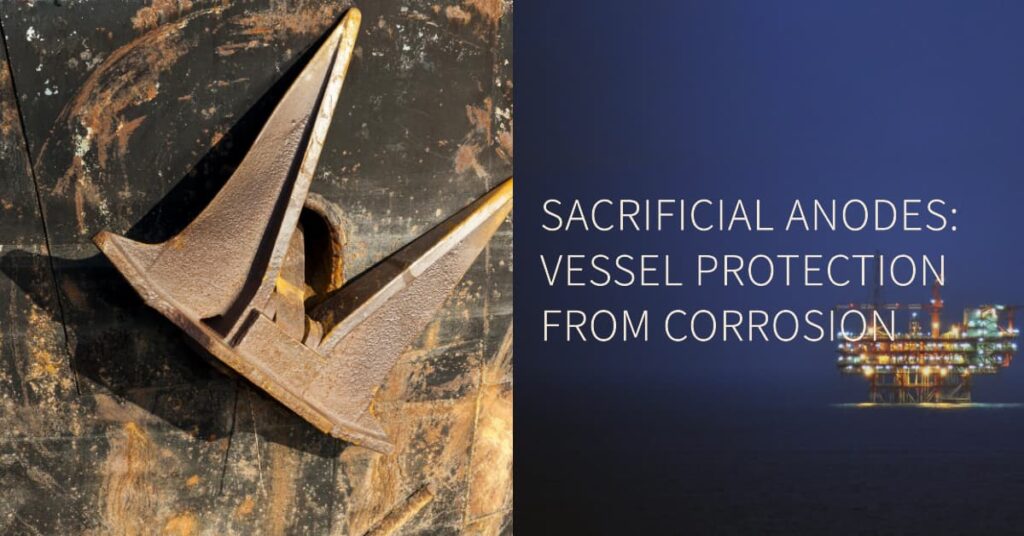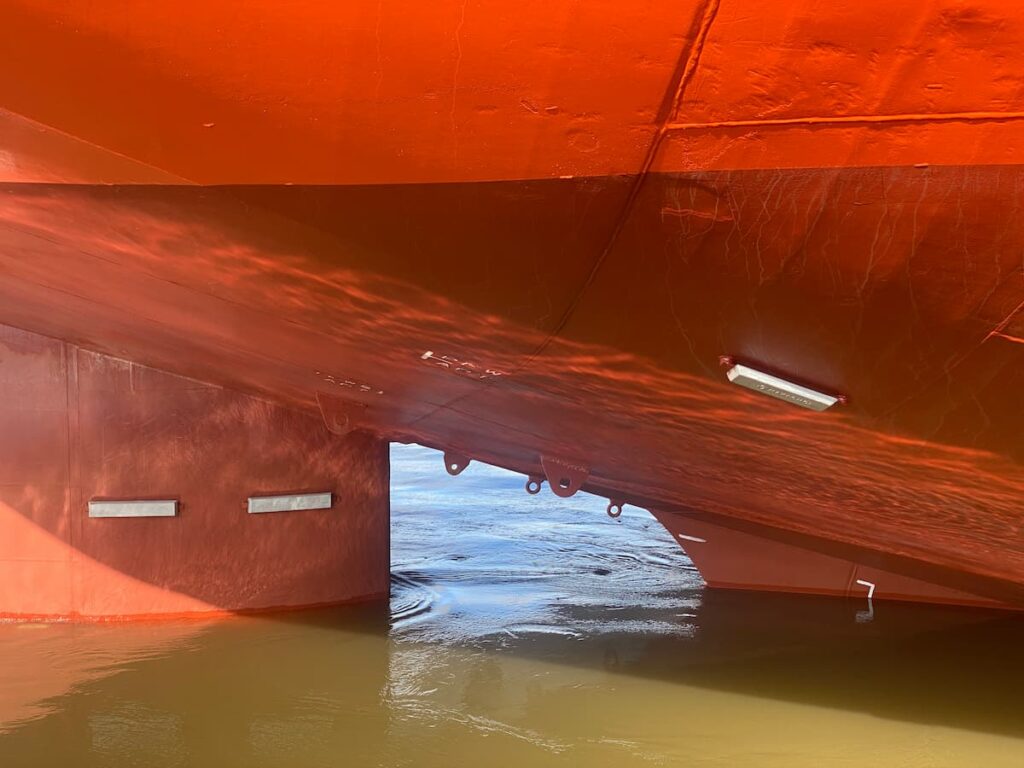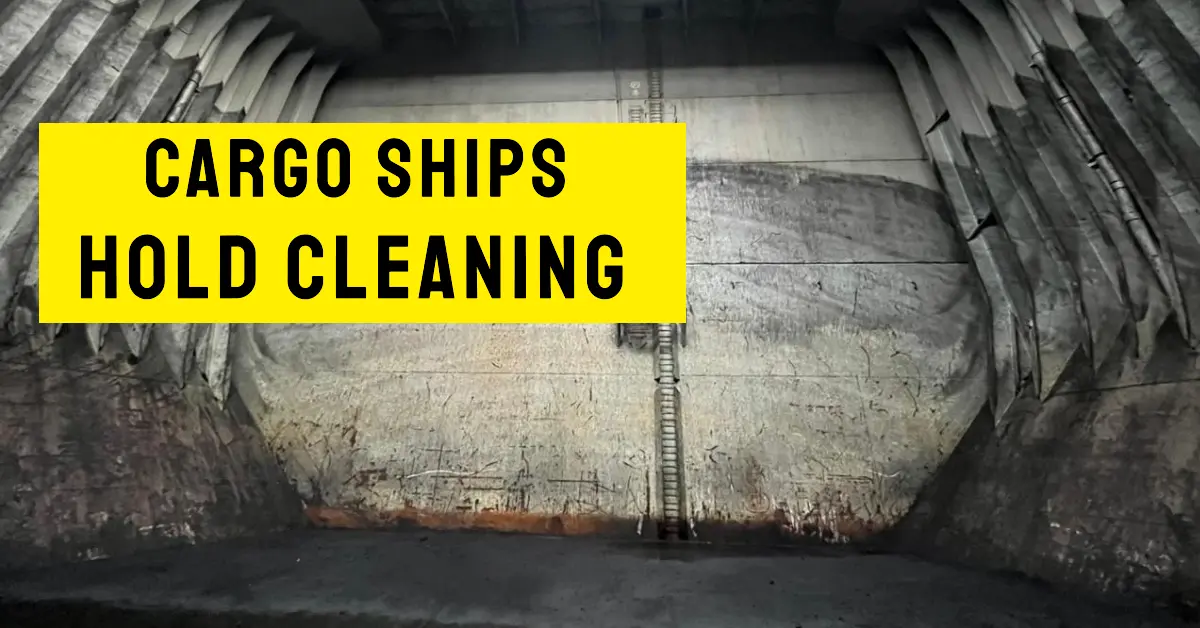In the battle against corrosion, sacrificial anodes are the unsung heroes that protect metal structures from deterioration.
Sacrificial anodes play a significant role in preventing corrosion and preserving the integrity of metal structures. By sacrificing themselves to protect the metal, these anodes provide an effective and reliable method of corrosion control.
Here are the key takeaways about the importance of sacrificial anodes in corrosion protection:
- Corrosion Prevention: The primary purpose of sacrificial anodes is to prevent corrosion. By diverting the flow of electrons and sacrificing themselves, these anodes create a protective barrier that shields the metal structure from corrosive elements. This helps to minimize the risk of metal degradation, structural damage, and costly repairs.
- Metal Preservation: Sacrificial anodes are crucial for preserving the lifespan and functionality of metal structures. By providing continuous corrosion protection, these anodes extend the longevity of equipment, infrastructure, and other assets. This is particularly important in industries such as marine, oil and gas, and infrastructure, where metal degradation can have severe consequences.
- Cost Savings: Investing in sacrificial anodes can lead to significant cost savings in the long run. By preventing corrosion and minimizing the need for repairs or replacements, businesses can avoid the expenses associated with metal degradation. This includes the costs of downtime, equipment failure, and the replacement of corroded components.
- Reliability and Ease of Use: Sacrificial anodes offer a reliable and straightforward solution for corrosion protection. Once installed and properly maintained, these anodes work continuously to safeguard metal structures without requiring complex monitoring or maintenance procedures. This makes them a practical choice for businesses seeking effective corrosion control methods.
Sacrificial anodes are of utmost importance in corrosion protection. Their ability to prevent corrosion, preserve metal integrity, and provide cost savings makes them an essential component in various industries.
By investing in sacrificial anodes and following proper installation and maintenance practices, businesses can ensure the longevity and reliability of their metal structures.
So, let’s explore in more detail the principal of sacrificial anodes and discover how they can safeguard your valuable assets.

What are Sacrificial Anodes?
Sacrificial anodes are a vital component in the battle against corrosion. They are specifically designed to protect metal structures from the damaging effects of galvanic corrosion. But what exactly are sacrificial anodes, and how do they work?
In simple terms, sacrificial anodes are blocks or rods made from highly active metals such as zinc, aluminum, or magnesium. These metals are more reactive than the metal they are protecting, making them sacrificial in nature. When connected to the metal structure through an electrical circuit, sacrificial anodes attract corrosion-causing ions and undergo a process called galvanic corrosion.
During galvanic corrosion, the sacrificial anode corrodes instead of the metal structure it is protecting. This sacrificial sacrifice prevents the metal structure from corroding and extends its lifespan. By sacrificing themselves, sacrificial anodes act as a sacrificial barrier, shielding the metal structure from the corrosive elements present in the environment.
The purpose of sacrificial anodes is to provide cathodic protection, a technique widely used in various industries, including marine, oil and gas, and infrastructure. Cathodic protection involves creating a galvanic cell, where the sacrificial anode becomes the anode, and the metal structure becomes the cathode. This electrochemical process effectively prevents corrosion by diverting the flow of electrons away from the metal structure.
The definition of sacrificial anodes is clear: they are sacrificial blocks or rods made from highly active metals that protect metal structures from corrosion. Their purpose is to provide cathodic protection by sacrificing themselves and preventing the metal structure from corroding.
Now that we understand the basics of sacrificial anodes, let’s delve deeper into how they work and the different types available for corrosion protection.
How do Sacrificial Anodes Work?
Sacrificial anodes work based on the principle of galvanic corrosion and electrochemical reactions. Understanding the mechanism behind sacrificial anodes is key to comprehending how they effectively prevent corrosion.
To explain it simply, sacrificial anodes are made from highly active metals that are more reactive than the metal structure they are protecting. This difference in reactivity creates an electrochemical potential difference, which drives the flow of electrons from the sacrificial anode to the metal structure.
The galvanic series plays a crucial role in determining the effectiveness of sacrificial anodes. The galvanic series is a list that ranks metals and alloys based on their tendency to corrode. Metals higher in the galvanic series, such as zinc or magnesium, are more reactive and will corrode sacrificially to protect metals lower in the series, like steel or iron.
When a sacrificial anode is connected to the metal structure through an electrical circuit, it becomes the anode, and the metal structure becomes the cathode. This setup allows for the flow of electrons from the sacrificial anode to the metal structure.
As the sacrificial anode corrodes sacrificially, it releases electrons into the metal structure. This influx of electrons creates a protective layer on the metal surface, preventing the corrosive elements from attacking the metal structure. In essence, sacrificial anodes sacrifice themselves to protect the metal structure from corrosion.
The mechanism of sacrificial anodes is based on the principle of corrosion prevention through sacrificial metal. By sacrificing the anode, the metal structure remains intact and corrosion-free. This mechanism has proven to be highly effective in various industries, including marine, oil and gas, and infrastructure, where corrosion prevention is of utmost importance.
Now that we understand how sacrificial anodes work, let’s explore the different types available and their specific applications for corrosion protection.
What are the Types of Sacrificial Anodes?
Sacrificial anodes come in various types, each specifically designed for different applications and environments. Understanding the different types of sacrificial anodes is essential for selecting the right one to effectively protect your metal structures from corrosion.
In this section, we will explore the three main types of sacrificial anodes: zinc, aluminum, and magnesium. We will delve into their unique properties, common applications, and the benefits they offer in corrosion prevention.
So, let’s dive into the world of sacrificial anodes and discover which type is best suited for your specific needs.
Zinc Sacrificial Anodes
Zinc sacrificial anodes are widely used in marine environments to provide effective corrosion protection. These anodes are made from high-purity zinc, which offers excellent sacrificial properties and durability in seawater.
One of the key properties of zinc sacrificial anodes is their high electrochemical potential. This makes them highly reactive and ideal for protecting metal structures in corrosive marine environments. When connected to the metal structure, zinc sacrificial anodes create a galvanic cell, diverting the flow of electrons and sacrificing themselves to prevent corrosion.
The primary application of zinc sacrificial anodes is in boats, ships, and other marine structures. They are commonly used to protect ship’s hulls, propellers, rudders, and other submerged metal components. By installing zinc anodes, you can significantly reduce the risk of corrosion and extend the lifespan of your marine equipment.

Zinc sacrificial anodes are specifically designed to withstand the harsh conditions of seawater. They have a slow consumption rate, ensuring long-lasting protection. However, it is important to regularly inspect and replace zinc anodes when they are significantly depleted, as their effectiveness diminishes over time.
In summary, zinc sacrificial anodes are the go-to choice for corrosion protection in marine environments. Their high reactivity and durability make them ideal for safeguarding boats and other submerged metal structures. By installing zinc anodes, you can ensure the longevity and integrity of your marine equipment, minimizing the costly effects of corrosion.
Now that we’ve explored zinc sacrificial anodes, let’s move on to the next type: aluminum sacrificial anodes.
Aluminum Sacrificial Anodes
Aluminum sacrificial anodes are a popular choice for protecting metal structures in soil and underground environments. These anodes are made from high-quality aluminum alloys, offering excellent corrosion resistance and durability.
One of the key properties of aluminum sacrificial anodes is their adaptability to different soil conditions. They are specifically designed to provide effective cathodic protection in various soil types, including clay, sand, and loam. By installing aluminum anodes, you can prevent corrosion and extend the lifespan of underground pipelines, storage tanks, and other buried metal structures.
Aluminum sacrificial anodes work by creating a galvanic cell when connected to the metal structure. They sacrifice themselves to protect the metal from corrosion, diverting the flow of electrons and preventing the corrosive elements in the soil from attacking the structure.
The specific use cases for aluminum sacrificial anodes are vast. They are commonly employed in industries such as oil and gas, water treatment, and infrastructure. Underground pipelines, in particular, greatly benefit from the corrosion protection provided by aluminum anodes. By utilizing these anodes, you can mitigate the risk of pipeline leaks, structural damage, and costly repairs.
It is important to note that the effectiveness of aluminum sacrificial anodes can vary depending on factors such as soil resistivity and moisture content. Regular inspection and maintenance are crucial to ensure optimal performance. Monitoring the consumption rate of the anodes and replacing them when necessary is essential for continuous corrosion protection.
In summary, aluminum sacrificial anodes are a reliable choice for protecting metal structures in soil and underground environments. Their corrosion resistance and adaptability make them ideal for safeguarding underground pipelines and other buried metal assets. By utilizing aluminum anodes, you can minimize the risk of corrosion-related issues and ensure the longevity of your infrastructure.
Now that we’ve explored aluminum sacrificial anodes, let’s move on to the final type: magnesium sacrificial anodes.
Magnesium Sacrificial Anodes
Magnesium sacrificial anodes are widely used for corrosion protection in water-based environments, particularly in water heaters and hot water tanks. These anodes are made from high-purity magnesium, which offers excellent electrochemical properties and durability.
One of the key characteristics of magnesium sacrificial anodes is their high driving voltage. This makes them highly effective in providing cathodic protection in water, where corrosion can be a significant concern. By connecting magnesium anodes to the metal structure of water heaters or hot water tanks, you can prevent corrosion and extend the lifespan of these essential appliances.
Magnesium sacrificial anodes work by creating a galvanic cell when connected to the metal structure. They sacrifice themselves to protect the metal from corrosion, diverting the flow of electrons and preventing the corrosive elements in the water from attacking the structure.
Water heaters, in particular, greatly benefit from the corrosion protection provided by magnesium sacrificial anodes. These anodes help prevent the formation of rust and scale inside the tank, reducing the risk of leaks and improving the overall efficiency and performance of the water heater.
It is important to note that the consumption rate of magnesium sacrificial anodes can be relatively high compared to other types of sacrificial anodes. Regular inspection and replacement are crucial to ensure continuous corrosion protection. Monitoring the condition of the anodes and replacing them when significantly depleted is essential for maintaining the effectiveness of the protection.
In summary, magnesium sacrificial anodes are a reliable choice for corrosion protection in water heaters and hot water tanks. Their high driving voltage and durability make them ideal for safeguarding these appliances from the corrosive effects of water. By utilizing magnesium anodes, you can prolong the lifespan of your water heating systems and ensure efficient and reliable operation.
Now that we’ve explored magnesium sacrificial anodes, we have covered the main types of sacrificial anodes commonly used for corrosion protection.
Installation and Maintenance of Sacrificial Anodes
Proper installation and regular maintenance of sacrificial anodes are crucial for ensuring effective corrosion protection. Whether you’re responsible for maintaining marine structures, underground pipelines, or water heating systems, understanding the correct installation and maintenance practices is essential.
In this section, we will delve into the step-by-step process of installing sacrificial anodes and provide insights into the importance of regular inspection and replacement.
By following these guidelines, you can maximize the lifespan of your anodes and ensure continuous corrosion prevention. So, let’s explore the world of sacrificial anode installation and maintenance and discover how to safeguard your valuable assets.
Proper Installation of Sacrificial Anodes
Proper installation of sacrificial anodes is crucial for ensuring effective corrosion protection. By following the correct installation process, you can maximize the performance and lifespan of your anodes. Here is a step-by-step guide on how to correctly install sacrificial anodes for optimal corrosion prevention:
- Anode Placement: Determine the appropriate locations for installing the sacrificial anodes. Consider the areas that are most susceptible to corrosion and ensure proper coverage. Common areas include the submerged parts of marine structures, the exterior surface of underground pipelines, or the interior of water heating systems.
- Surface Preparation: Before installing the anodes, ensure that the surface is clean and free from any contaminants or coatings. Use a wire brush or sandpaper to remove any rust, scale, or paint. This will ensure a good electrical connection between the anode and the metal structure.
- Anode Attachment: Attach the sacrificial anode securely to the metal structure using the appropriate method. This can include welding, bolting, or clamping, depending on the specific application and the type of anode. Follow the manufacturer’s instructions for the recommended attachment method.
- Electrical Connection: Establish a proper electrical connection between the sacrificial anode and the metal structure. This can be achieved by using a suitable conductor, such as a copper wire or cable. Ensure that the connection is tight and secure to allow for efficient electron flow.
- Multiple Anodes: If multiple sacrificial anodes are required for comprehensive corrosion protection, ensure they are evenly distributed and properly connected. This will help distribute the protective current evenly across the metal structure.
By following these steps, you can ensure the proper installation of sacrificial anodes and maximize their effectiveness in preventing corrosion. Remember to consult the manufacturer’s guidelines and industry best practices for specific installation requirements.
Now that we’ve covered the proper installation of sacrificial anodes, let’s move on to the importance of regular inspection and replacement to maintain optimal corrosion protection.
Regular Inspection and Replacement
Regular inspection and replacement of sacrificial anodes are essential for maintaining continuous corrosion protection. Over time, sacrificial anodes deteriorate and become less effective in preventing corrosion. Here’s why regular inspection and replacement are crucial:
- Anode Lifespan: Sacrificial anodes have a finite lifespan, which varies depending on factors such as the type of anode, environmental conditions, and the level of corrosion present. It is important to be aware of the expected lifespan of the anodes installed in your system. Consult the manufacturer’s guidelines or industry standards to determine the recommended replacement schedule.
- Anode Deterioration: As sacrificial anodes protect the metal structure, they gradually corrode sacrificially. This means that over time, the anodes will become depleted and lose their effectiveness. Regular inspection allows you to monitor the condition of the anodes and identify signs of deterioration, such as significant depletion or physical damage.
- Maintenance and Performance: Regular inspection of sacrificial anodes provides an opportunity to assess the overall maintenance needs of your corrosion protection system. It allows you to identify any issues or deficiencies that may affect the performance of the anodes or the integrity of the metal structure. Addressing these issues promptly can help prevent costly repairs or replacements in the future.
- Replacement Schedule: Based on the inspection findings and the expected lifespan of the anodes, establish a regular replacement schedule. This ensures that the sacrificial anodes are replaced before they are fully depleted and unable to provide adequate corrosion protection. Following a consistent replacement schedule helps maintain the integrity of the metal structure and prolong its lifespan.
By conducting regular inspections and adhering to a proper replacement schedule, you can ensure that your sacrificial anodes are always in optimal condition, providing continuous corrosion protection. Remember to document the inspection results and replacement dates for future reference.
- Comprehensive Guide to Hold Cleaning for Cargo Ships: Ensuring Maritime Safety and Efficiency – October 19, 2024
- Responsibilities of a Fourth Engineer on Cargo Ships – September 10, 2024
- The Role of Cargo Ships in Global Trade – August 22, 2024



